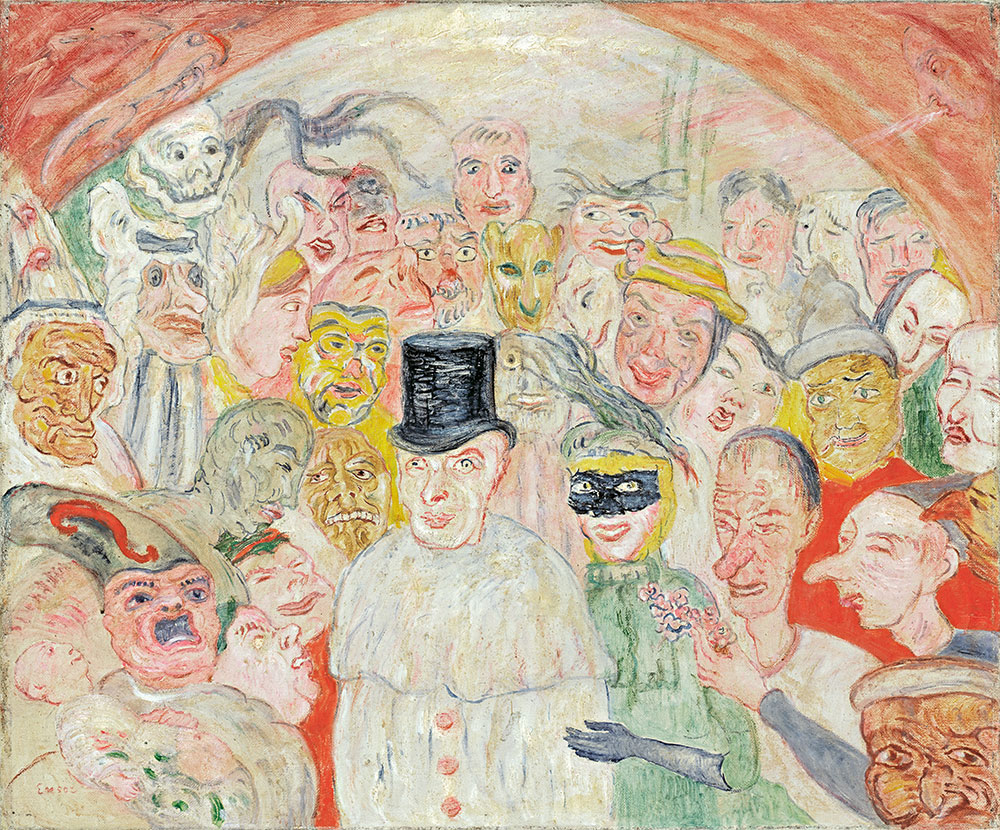Art speaks for itself and makes hearts beat faster
Information about an artwork has no effect on the aesthetic experience of museum visitors. The characteristics of the artwork itself have a much stronger impact on observers. Psychologists from the University of Basel reached these conclusions in a new study.
20 January 2020
Aesthetic experiences involve a complex interaction of modes of perception and cognitive processes: the artworks’ properties such as coloring and the content depicted play a role, and so do the individual characteristics of the viewer, their knowledge, and contextual factors such as an artwork’s title.
Researchers from the University of Basel led by the psychologists Professor Jens Gaab and Professor Klaus Opwis examined the extent to which an artwork’s contextual information influences aesthetic experience in a real exhibition situation. They particularly focused on the question of whether and how various kinds of information affect the aesthetic experience of museum visitors.
Previous research has shown that contextual information can significantly shape perception and experience – for example, wine tastes better to consumers when the price is higher.
Study under real conditions
For the present study, 75 participants visited the Future Present exhibition at the Schaulager Museum in Münchenstein and viewed six paintings by various artists from the Flemish Expressionism era. They were randomly assigned to one of two groups and received either simple descriptive information about the paintings or elaborative, in-depth information, such as an interpretation of the work.
The participants evaluated the intensity of their aesthetic experience in a questionnaire. The researchers also measured the emotions that arose while they viewed the art using psychophysiological data such as heart rate and skin conductance.
The researchers expected that the detailed descriptions would have a stronger effect on the cognitive processes and aesthetic experience than the simple information.
Artworks influence heart rate
The results showed, however, that neither the simple nor the detailed information influenced the aesthetic experience. There was no evidence of differences between the two groups, whether through the subjective evaluation or the physical reactions.
The properties of the artworks themselves, however, did affect the aesthetic experience. The physical reactions were stronger than before the participants began viewing the art, and differed significantly depending on the painting. The artwork that produced the greatest reaction in terms of aesthetic experience was James Ensor’s Les masques intrigués from 1930. “Ensor’s artworks mostly appear bizarre or absurd; this particular mode of expression may be what led the viewers to provide more extreme evaluations,” explains lead author Luisa Krauss.
The study, which was published in the journal Psychology of Aesthetics, Creativity, and the Arts, thereby relativizes the significance of accompanying information and also underscores how the context of the museum influences aesthetic experience. “Museum visitors do not necessarily require information to feel satisfied after visiting an exhibition. The art can speak for itself,” says Professor Jens Gaab in summary.
Original source
Luisa Kraus, Celine Ott, Klaus Opwis, Andrea Meyer, Jens Gaab
Impact of contextualizing information on aesthetic experience and psychophysiological responses to art in a museum: A naturalistic randomized controlled trial
Psychology of Aesthetics, Creativity, and the Arts (2019), doi: 10.1037/aca0000280
Further information
Prof. Dr. Jens Gaab, University of Basel, Faculty of Psychology, Clinical Psychology and Psychotherapy, Tel. +41 61 207 07 48, Email: jens.gaab@unibas.ch



